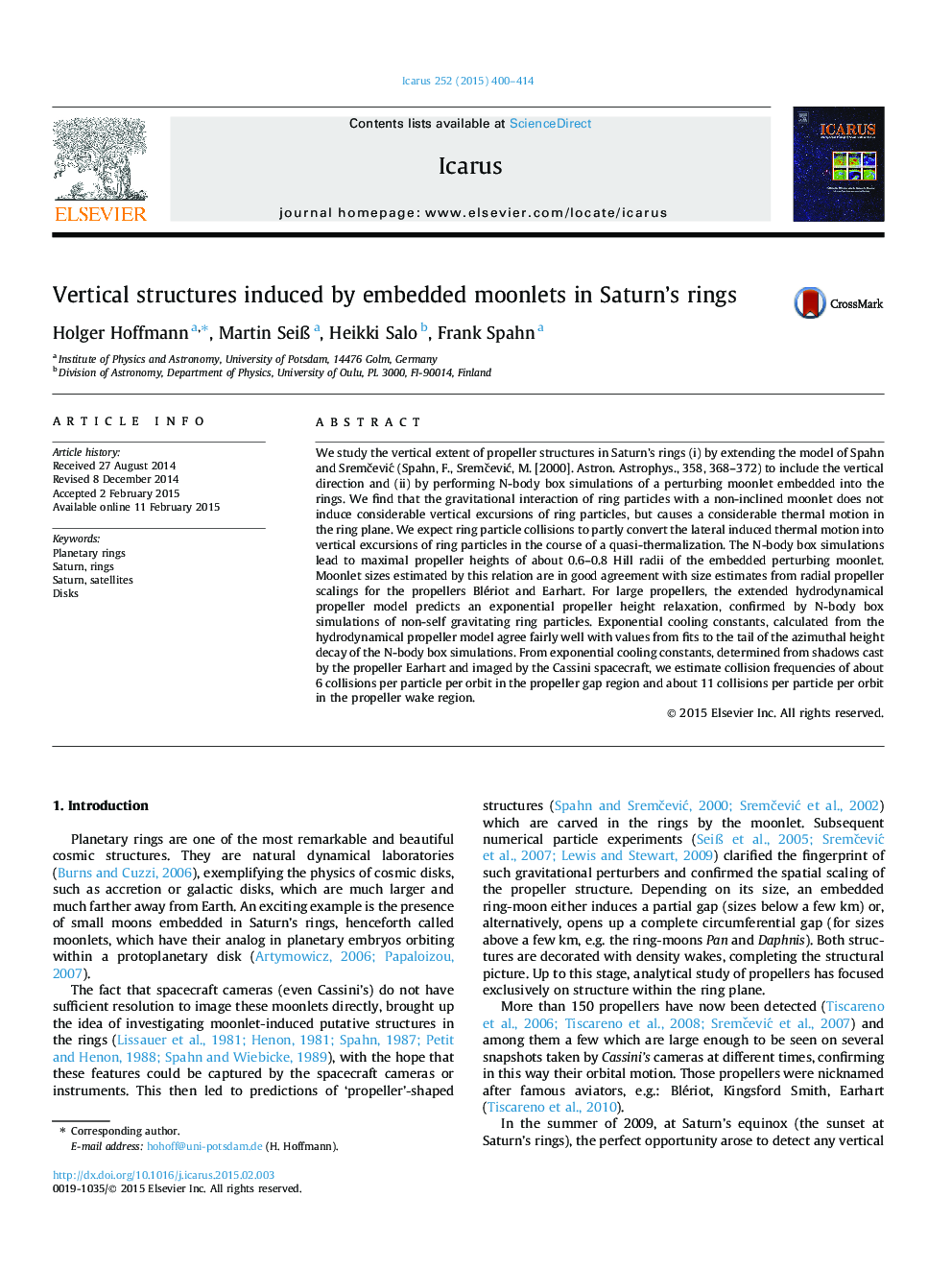| Article ID | Journal | Published Year | Pages | File Type |
|---|---|---|---|---|
| 8136608 | Icarus | 2015 | 15 Pages |
Abstract
We study the vertical extent of propeller structures in Saturn's rings (i) by extending the model of Spahn and SremÄeviÄ (Spahn, F., SremÄeviÄ, M. [2000]. Astron. Astrophys., 358, 368-372) to include the vertical direction and (ii) by performing N-body box simulations of a perturbing moonlet embedded into the rings. We find that the gravitational interaction of ring particles with a non-inclined moonlet does not induce considerable vertical excursions of ring particles, but causes a considerable thermal motion in the ring plane. We expect ring particle collisions to partly convert the lateral induced thermal motion into vertical excursions of ring particles in the course of a quasi-thermalization. The N-body box simulations lead to maximal propeller heights of about 0.6-0.8 Hill radii of the embedded perturbing moonlet. Moonlet sizes estimated by this relation are in good agreement with size estimates from radial propeller scalings for the propellers Blériot and Earhart. For large propellers, the extended hydrodynamical propeller model predicts an exponential propeller height relaxation, confirmed by N-body box simulations of non-self gravitating ring particles. Exponential cooling constants, calculated from the hydrodynamical propeller model agree fairly well with values from fits to the tail of the azimuthal height decay of the N-body box simulations. From exponential cooling constants, determined from shadows cast by the propeller Earhart and imaged by the Cassini spacecraft, we estimate collision frequencies of about 6 collisions per particle per orbit in the propeller gap region and about 11 collisions per particle per orbit in the propeller wake region.
Related Topics
Physical Sciences and Engineering
Earth and Planetary Sciences
Space and Planetary Science
Authors
Holger Hoffmann, Martin SeiÃ, Heikki Salo, Frank Spahn,
